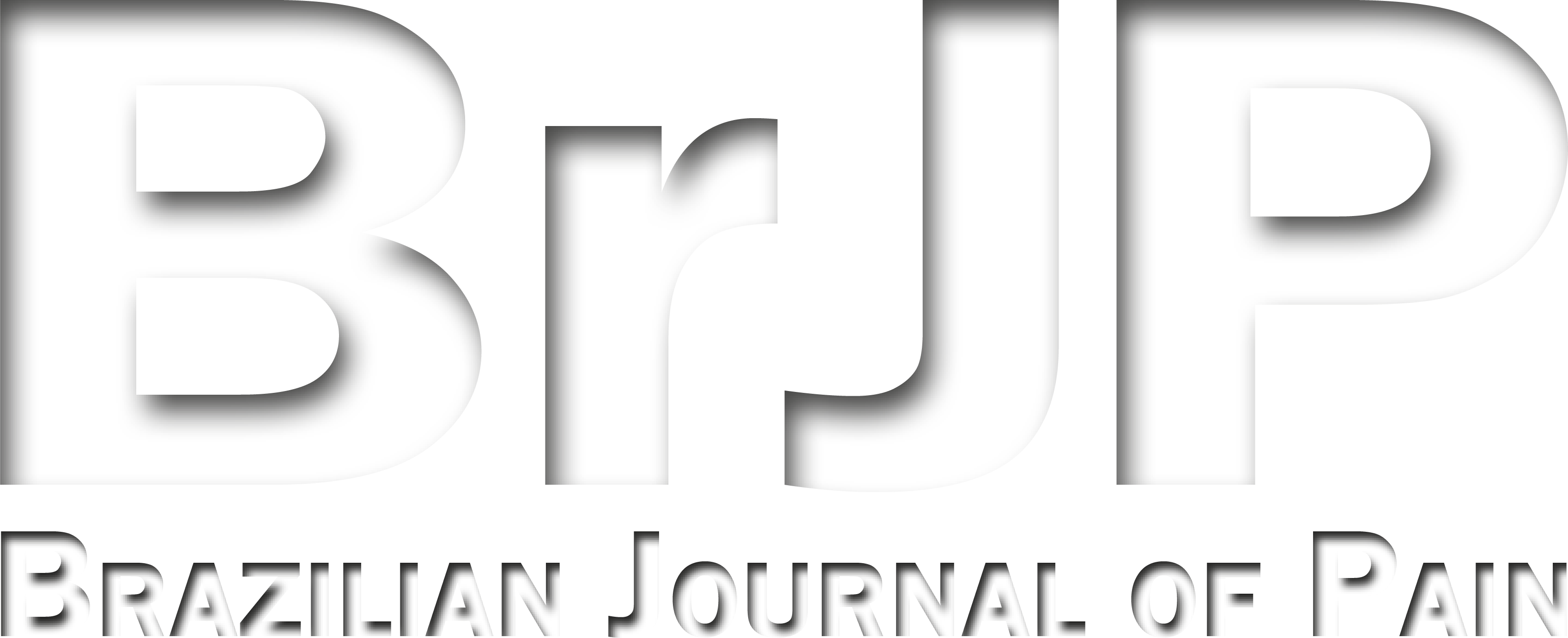Persistent idiopathic facial pain, a diagnosis and treatment of challenge. Case report
Raphael de Souza Borges; Durval Campos Kraychete; Emilly Leticia Gusmão Borges; Valmir Machado de Melo Filho
Abstract
Keywords
References
Siqueira JTT, Teixeira MJ. Dores Orofaciais: Diagnóstico e Tratamento. 2009.
Teixeira MJ, Siqueira SR. Neuralgias do segmento facial. J Bras Ocl ATM Dor Orof. 2003;3(10):101-10.
Andrade D Ciampi de, Lefaucheur JP, Galhardoni R, Ferreira KS, Paiva AR Brandão, Bor-Seng-Shu E. Subthalamic deep brain stimulation modulates small fiber-dependent sensory thresholds in Parkinsons' disease. Pain. 2002;153(5):1107-13.
Nóbrega JC, Siqueira SR, Siqueira JT, Teixeira MJ. Diferential diagnosis in atypical facial pain: a clinical study. Arq Neuropsiquiatr. 2007;65(2A):256-61.
Woda A, Pionchon P. A unified of concept of idiophatic orofacial pain: clinical features. J Orofac Pain. 1999;13(3):172-85.
Graff-Radford SB, Solberg WK. Atypical odontalgia. J Craniomand Disord. 1992;6(4):260-5.
Persistent Idiopathic Facial Pain (Previously "Atypical Facial Pain"). 2016.
Ramos JL, Peres RS. Protocolo de avaliação psicológica para pacientes oncológicos: uma proposta. Psicol Argum. 2013;31(75):729-37.
Gazi MC, Issy AM, Ávila IP, Sakata RK. Comparison of acupuncture to injection for myofascial trigger point pain. Pain Pract. 2011;11(2):132-8.
Shah JP, Heimur J. New frontiers in the pathophysiology of myofascial pain. Pain Practioner. 2012;22(2):26-34.
Ram S, Teruel A, Kumar S, Clark G. Clinical characteristics and diagnosis of atypical odontalgia: implications for dentists. J Am Dent Assoc. 2009;140(2):223-8.
Vickers ER, Cousins MJ. Neuropathic orofacial in: part 1-prevalence and pathophysiology. Aust Endod J. 2000;26(1):19-26.
Lilly JP, Law AS. Atypical odontalgia misdiagnosed as odontogenic pain: a case report and discussion of treatment. J Endod. 1997;23(5):337-9.
Ram S, Teruel A, Kumar SK, Clark G. Clinical characteristics and diagnosis of atypical odontalgia: implications for dentists. J Am Dent Assoc. 2009;140(2):223-8.
Mellis M, Secci S. Diagnosis and treatment of atypical odontalgia: a review of the literature and two case reports. J Contemp Dent Pract. 2007;8(3):81-9.
Alves Neto O. Dor - Princípios e Prática. 2009.
Wang BC, Liu D, Furnback WE, Bifa F, Dong P, Xie L. The cost-effectiveness of pregabalin versus gabapentin for peripheral neuropathic pain (pNeP) and postherpetic neuralgia (PHN) in China. Pain Ther. 2016;5(1):81-91.
Borodic GE, Acquadro MA. The use of botulinum toxin for the treatment of chronic facial pain. J Pain. 2002;3(1):21-7.
Wu CJ, Lian YJ, Zheng YK, Zhang HF, Chen Y, Xie NC. Botulinum toxin type A for the treatment of trigeminal neuralgia: results from a randomized, double-blind, placebo-controlled trial. Cephalalgia. 2002;32(6):443-50.
Shao XM, Shen Z, Sun J, Fang F, Fang JF, Wu YY. Strong manual acupuncture stimulation of "Huantiao" (GB 30) reduces pain-induced anxiety and p-ERK in the anterior cingulate cortex in a rat model of neuropathic pain. Evid Based Complement Alternat Med. 2015;2015:235491.
Portnoi AG. Dor, Stress e Coping: Grupos Operativos em Doentes com Síndrome de Fibromialgia. 1999.
Submitted date:
03/18/2018
Accepted date:
08/01/2018
